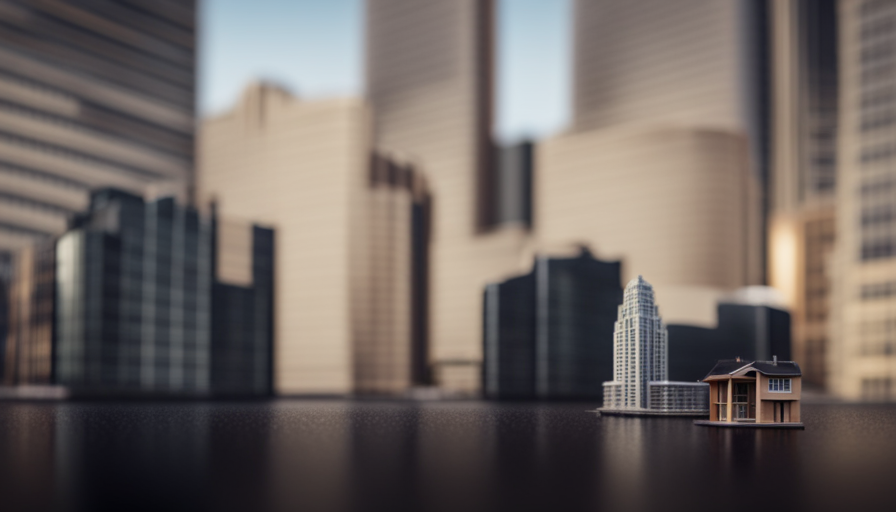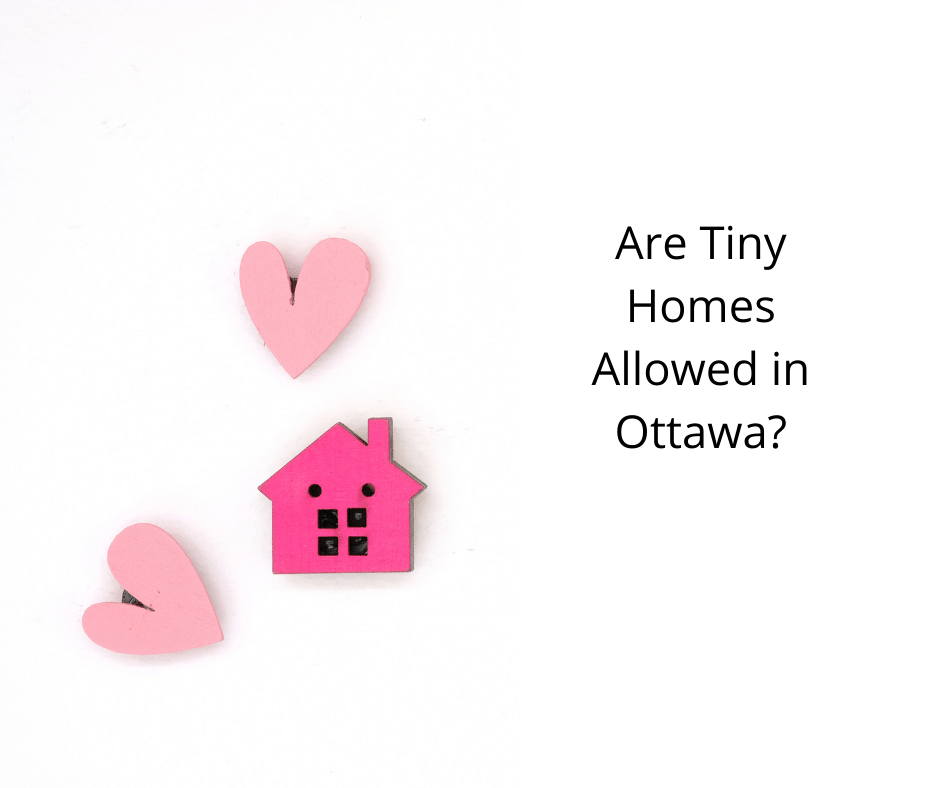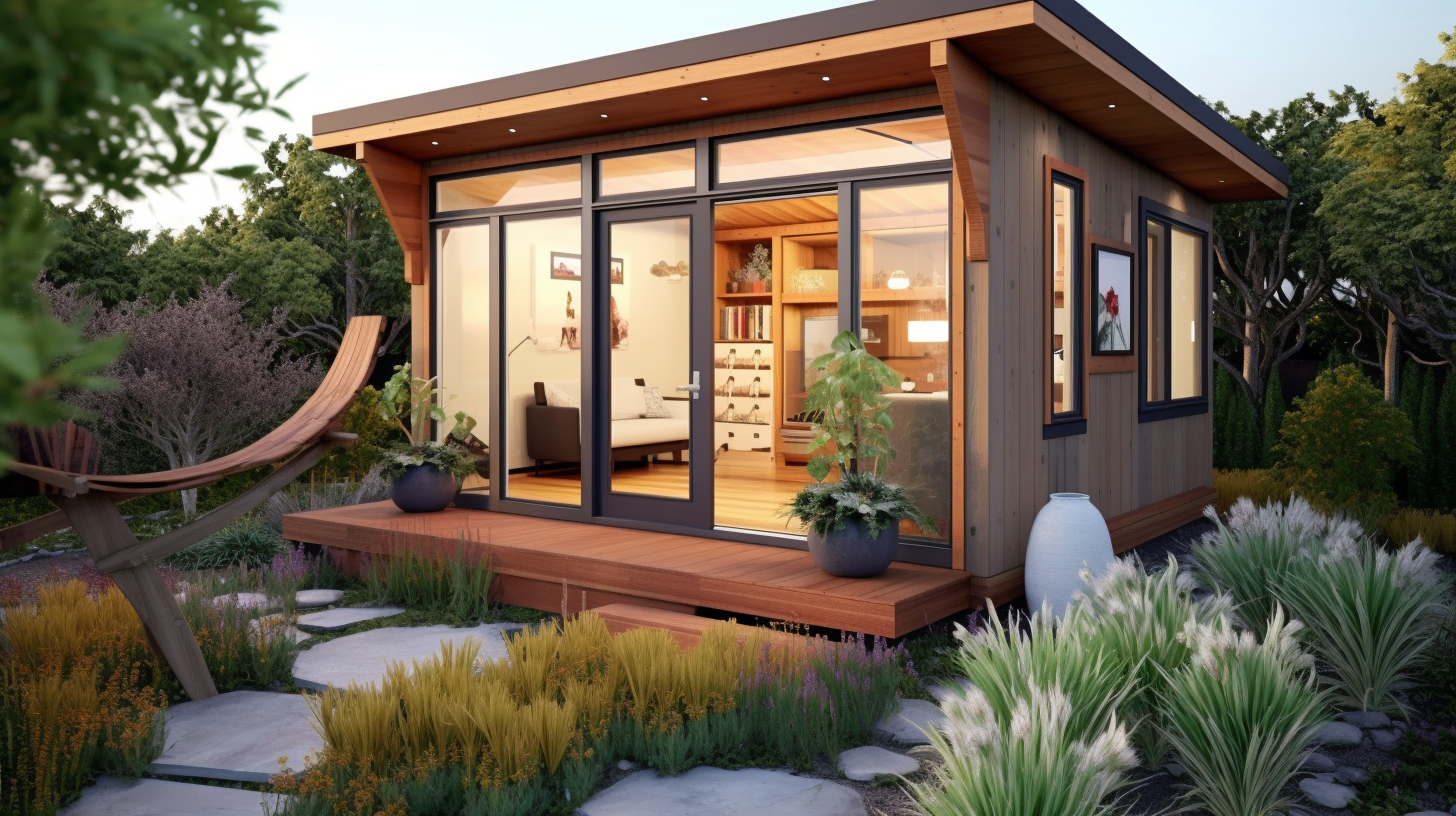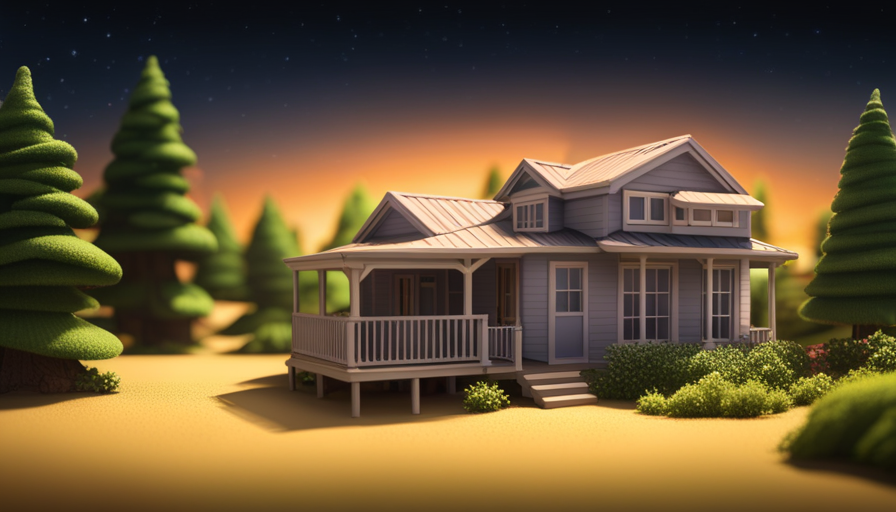Have you ever felt trapped in a tight space, yearning for more freedom and a more uncomplicated life? Building a tiny house might be the answer you’ve been seeking. But before you start picturing a cozy and simple way of living, it’s important to understand the size restrictions involved. Remember the saying, ‘knowledge is power’. In this case, it plays a vital role in achieving your tiny house dreams.
In this article, I will guide you through the maze of zoning laws, building codes, and regulations that dictate the size of your tiny house. We’ll explore everything from maximum square footage to height restrictions, setback requirements, and more. So, strap in and get ready to navigate the complex world of tiny house size restrictions. Let’s turn your dreams into a reality!
Key Takeaways
- Understanding local zoning laws and regulations is crucial before building a tiny house.
- Building codes determine minimum room dimensions and ceiling height requirements.
- Setback requirements dictate the distance between the tiny house and property lines.
- Proper ventilation, insulation, and energy efficiency are important considerations for a healthy and comfortable living space.
Understanding Zoning Laws and Regulations
So you’re ready to build your dream tiny house, but do you know the size restrictions that zoning laws and regulations impose? Before embarking on your project, it’s crucial to understand the rules governing the construction of tiny houses.
The first step is to research and familiarize yourself with the zoning laws in your area. These laws determine the type of structures permitted on a property. Filing permits is an essential part of the process, as it ensures that your tiny house meets all the necessary requirements.
Additionally, assessing property restrictions is crucial to ensure that your tiny house complies with setbacks, height limitations, and other regulations. Once you have a clear understanding of zoning laws and have filed the necessary permits, you can move on to the next section: familiarizing yourself with building codes.
Familiarizing Yourself with Building Codes
When it comes to building codes, there are several key points that I’ve learned through my expertise and technical knowledge.
First, it’s crucial to understand the minimum room dimensions that are required by the building codes. These dimensions ensure that the rooms in your house are of a certain size to provide comfort and functionality.
Additionally, ceiling height requirements must be met to ensure proper safety and accessibility.
Finally, proper ventilation and insulation are essential for maintaining a healthy and energy-efficient living environment.
Learning about Minimum Room Dimensions
To ensure a comfortable living space, it’s important to know the minimum dimensions required for each room in a tiny house. When designing a tiny house, space optimization is crucial, and understanding the minimum room dimensions can help maximize the functionality of each area.
The minimum room dimensions vary depending on the specific building codes and regulations of your location, but generally, they provide guidelines for the minimum size of bedrooms, bathrooms, kitchens, and living areas. These dimensions ensure that each room is spacious enough to accommodate necessary furniture and appliances, while still allowing for comfortable movement within the space.
Understanding the minimum room dimensions is essential in creating a well-designed and functional tiny house that meets all the necessary requirements.
Moving on to the next topic, it’s also important to understand the ceiling height requirements for each room to ensure a comfortable and compliant living space.
Understanding Ceiling Height Requirements
Don’t let your living space feel cramped and suffocating. Make sure you understand the ceiling height requirements for each room in your compact abode. Ceiling height restrictions are an important aspect of building regulations when it comes to constructing a tiny house. These requirements ensure that there is enough headroom in each room, allowing for comfortable movement and a sense of openness.
Generally, the minimum ceiling height for habitable rooms is around 7 feet, but it may vary depending on local building codes. It’s crucial to check these regulations before starting your construction process to avoid any legal issues. By adhering to the ceiling height requirements, you can ensure that your tiny house feels spacious and comfortable.
Now, let’s move on to the next section, where we will discuss ensuring proper ventilation and insulation without compromising on space.
Ensuring Proper Ventilation and Insulation
Make sure you understand the importance of proper ventilation and insulation for a comfortable and energy-efficient living space in your compact abode. When it comes to building a tiny house, these two factors are crucial for maintaining a healthy indoor environment and reducing energy consumption.
Here are three key points to consider:
- Ventilation: Proper airflow is essential to prevent moisture build-up and ensure good air quality. Installing windows and using exhaust fans can help circulate fresh air throughout the space.
- Insulation: Adequate insulation is necessary to regulate temperature and minimize heat loss or gain. Consider using materials such as foam board, spray foam, or fiberglass insulation to create a thermal barrier.
By prioritizing proper ventilation and insulation, you can create a tiny house that is comfortable year-round and maximizes energy efficiency.
Now, let’s move on to determining the maximum square footage for your compact dwelling.
Determining Maximum Square Footage
Plan out the layout of your tiny house carefully to ensure you don’t bite off more than you can chew when it comes to determining the maximum square footage. It’s crucial to consider the maximum square footage allowed by zoning restrictions in your area.
These regulations vary from place to place, so it’s important to research and understand the specific rules and limitations that apply to your location. This will help you avoid any potential legal issues and ensure that your tiny house is compliant with the local regulations.
Once you’ve determined the maximum square footage, you can then move on to assessing height restrictions. By carefully considering these factors, you can design a tiny house that meets all the necessary requirements while still providing you with a comfortable and functional living space.
Assessing Height Restrictions
When determining the maximum square footage for a tiny house, it is crucial to assess height restrictions. Understanding these limitations is essential to ensure that your tiny house meets all the necessary regulations and permits. Assessing potential height restrictions involves researching local building codes and zoning regulations, as well as consulting with local authorities. These restrictions can vary depending on the location and may dictate the maximum height your tiny house can be. By assessing height restrictions, you can ensure that your tiny house remains compliant with the law and avoid any potential issues in the future. Moving forward, it is important to also consider setback requirements, which dictate the distance your tiny house must be set back from property lines or other structures.
Considering Setback Requirements
When considering setback requirements for building a tiny house, it’s important to determine the distance from property lines. This is crucial in order to comply with local regulations and avoid any potential legal issues.
Additionally, it’s necessary to carefully examine front, side, and rear setback regulations to ensure that the tiny house is positioned within the allowable limits.
Lastly, planning for outdoor living spaces is essential as setbacks may also apply to decks, porches, and other outdoor structures.
Determining the Distance from Property Lines
Although there may be limitations, it’s crucial to consider the distance from property lines when building a tiny house, ensuring a sense of security and peace of mind. Determining the distance from neighboring properties and understanding lot coverage are key factors in complying with building regulations. To provide a clearer understanding, let’s refer to the following table:
| Property Line | Minimum Distance Requirement |
|---|---|
| Front | 10 feet |
| Side | 5 feet |
| Rear | 15 feet |
By adhering to these guidelines, you can avoid encroaching on neighboring properties and maintain privacy. It’s important to note that these requirements may vary depending on the specific zoning regulations in your area. With the distance from property lines in mind, let’s now move on to examining front, side, and rear setback regulations, ensuring every aspect of building a tiny house is considered.
Examining Front, Side, and Rear Setback Regulations
Determining the distance from property lines is crucial when building a tiny house. Once you have determined the setbacks, it’s time to dive into the specific regulations.
In this section, we will examine front, side, and rear setback regulations.
When it comes to the front yard setback, you need to be aware of the minimum distance required between your tiny house and the front property line. This ensures that your tiny house is not encroaching on the street or obstructing the view.
Similarly, the rear yard setback determines the minimum distance between your tiny house and the rear property line. This regulation is in place to maintain privacy and prevent overcrowding.
Understanding these regulations will help you ensure that your tiny house meets the required setbacks in your area.
Now, let’s move on to the next section and explore the exciting world of planning for outdoor living spaces.
Planning for Outdoor Living Spaces
Creating a cozy and inviting outdoor oasis is a key aspect of designing your tiny home, ensuring that you maximize your living space and embrace the beauty of nature.
When planning for outdoor living spaces, it’s important to consider the right outdoor furniture and landscaping ideas that will complement the overall design of your tiny house. Opt for versatile and space-saving outdoor furniture pieces that can serve multiple functions, such as foldable tables and chairs or built-in benches with hidden storage compartments.
Additionally, carefully choose plants and landscaping elements that can thrive in small spaces, such as vertical gardens or container gardens. By incorporating these elements, you can create a harmonious and functional outdoor area that seamlessly extends the living space of your tiny home.
Transitioning to the subsequent section about reviewing utility connections, it’s crucial to ensure that your outdoor living spaces are properly equipped with the necessary utilities.
Reviewing Utility Connections
To make sure everything runs smoothly, you’ll need to review utility connections when building your tiny house.
Reviewing utility connections is a crucial step in the planning process, as it ensures that your tiny house will have access to all necessary services. This includes electricity, water, and sewage connections.
When reviewing utility connections, it’s important to consider exploring alternative energy sources. Solar panels and wind turbines are popular options for off-grid tiny houses, allowing you to generate your own electricity. Additionally, rainwater harvesting systems can be used to collect and store water for non-potable uses.
By integrating these alternative energy sources into your tiny house design, you can reduce your reliance on traditional utilities and create a more sustainable living space.
Consulting with a professional is essential to ensure that your utility connections meet all safety and code requirements.
Consulting with a Professional
When it comes to building a tiny house, it’s crucial to consult with professionals who have expertise in this area. Engaging an architect or designer can ensure that your tiny house is designed efficiently and meets all necessary regulations.
Seeking legal advice can help navigate any zoning restrictions or legal requirements.
Lastly, hiring a contractor with experience in building tiny houses can ensure that the construction process is smooth and that the final result is of high quality.
Engaging an Architect or Designer
Hiring an architect or designer is a wise decision when building a tiny house. They can bring valuable expertise and creativity to the project. Engaging professionals who specialize in designing small spaces ensures that every square inch of the house is optimized for functionality and efficiency.
These experts have the knowledge and technical skills to transform your ideas and requirements into a well-designed and structurally sound tiny house. Additionally, they can assist with budget planning, helping you make informed decisions about materials and construction methods that align with your financial resources.
By working closely with an architect or designer, you can create a space that maximizes both aesthetics and functionality within the constraints of your budget. As you move forward in the process, seeking legal advice will be crucial to ensure compliance with local building codes and regulations.
Seeking Legal Advice
Consulting with a lawyer is essential to ensure that your tiny home complies with all local regulations and codes, providing you with peace of mind throughout the building process. When seeking legal aid, here are four key considerations to keep in mind:
- Understanding local ordinances: A lawyer specialized in zoning and building codes will help you navigate the complex web of regulations specific to your area, ensuring your tiny house meets all requirements.
- Permitting process: Your lawyer can guide you through the permitting process, helping you gather the necessary documentation and ensuring all paperwork is submitted correctly and on time.
- Land use restrictions: Depending on your location, there may be specific land use restrictions that impact where you can place your tiny house. A lawyer can help you understand these restrictions and find suitable locations.
- Contractual agreements: Your lawyer can review and negotiate contracts with builders, suppliers, and other parties involved in the construction process, protecting your interests and ensuring a smooth working relationship.
By seeking legal advice, you can confidently move forward in understanding local ordinances and ensuring compliance with the law. This will set the stage for the next step: hiring a contractor with tiny house experience.
Hiring a Contractor with Tiny House Experience
With a skilled contractor who has extensive experience in the world of compact living, your tiny dream home will be built to perfection. Hiring a professional with knowledge and expertise in constructing tiny houses is essential to ensure that every inch of space is optimized and every detail is carefully considered.
A contractor with this specialized experience will understand the unique challenges and requirements of building a tiny house, from maximizing storage solutions to incorporating innovative space-saving techniques. They’ll also be able to provide valuable insight into budgeting considerations, helping you make informed decisions about materials and design choices that align with your financial goals.
By working with a contractor who understands the intricacies of tiny house construction, you can confidently navigate the process of building your dream home. As you move forward in obtaining permits and licenses, you’ll be equipped with the necessary foundation for a successful project.
Obtaining Permits and Licenses
Before you start, make sure to check the size restrictions in your area for building a tiny house and obtain the necessary permits and licenses.
Obtaining permits and licenses is a crucial step in the process of building a tiny house. It ensures that your construction project complies with local regulations and codes. Each jurisdiction may have its own specific requirements, so it’s important to research and understand the rules that apply to your location.
Contact your local building department or zoning office to inquire about the necessary permits and licenses needed for your tiny house project. This will help you avoid any legal issues and ensure a smooth and successful construction process.
Once you’ve obtained the required permits and licenses, you can move forward with confidence, knowing that you’re following the proper procedures.
Now, let’s discuss the next step of considering future expansion or modifications.
Considering Future Expansion or Modifications
After obtaining the necessary permits and licenses, it’s important to think about how you may want to expand or modify your tiny house in the future. Planning for future expansion or modifications is crucial to ensure that your tiny house can adapt to your changing needs and preferences.
When considering future expansion, you need to assess the available space and determine if there are any zoning restrictions or size limitations that you need to adhere to. Additionally, you should think about the structural integrity of your tiny house and whether it can support any potential expansions.
Modifications can range from adding extra rooms or storage space to incorporating energy-efficient features or upgrading appliances. By envisioning your future needs and desires, you can create a tiny house that can evolve with you over time.
Moving forward, it’s essential to stay informed and updated on building codes and regulations to ensure compliance with any changes that may arise.
Staying Informed and Updated
Stay informed and updated on the latest building codes and regulations to ensure that you’re complying with any changes that may affect your plans for future expansion or modifications. Don’t you want to be prepared for any potential obstacles that may arise?
Staying updated is crucial when it comes to building a tiny house. Building codes and regulations can vary from one jurisdiction to another, and they’re constantly evolving. By staying informed, you can make sure that your tiny house meets all the necessary requirements and stays in compliance with the law.
This will not only help you avoid any costly fines or penalties but also ensure the safety and quality of your tiny house. Keep an eye on local building departments, attend workshops or seminars, and join online communities to stay updated on any changes or new regulations that may affect your tiny house project.
Frequently Asked Questions
Can I build a tiny house on any piece of land?
No, building a tiny house is subject to building permits and zoning regulations. These regulations dictate where and how a tiny house can be built, ensuring compliance with safety and land use requirements.
Are there any specific requirements for the materials used in building a tiny house?
When it comes to building a tiny house, there are indeed specific requirements for the materials used. From the foundation to the walls, each component must meet certain standards to ensure safety and durability.
How do I determine the maximum allowable square footage for my tiny house?
To determine the maximum square footage for your tiny house, you need to consider zoning regulations. These regulations vary by location and may impose size restrictions. It is crucial to research and comply with local regulations to ensure your tiny house meets the requirements.
Are there any height restrictions for building a tiny house?
Yes, there are height restrictions for building a tiny house. These restrictions are typically determined by local zoning laws and can vary from one area to another. It is important to research and comply with these regulations when constructing your tiny house.
What are setback requirements and how do they apply to building a tiny house?
Setback requirements are regulations that determine the minimum distance a building must be set back from property lines. They are an important aspect of zoning regulations and building code compliance when constructing a tiny house.
Conclusion
In conclusion, navigating the world of tiny house building can be a complex journey. From understanding zoning laws to obtaining permits and licenses, there are many factors to consider. It is crucial to familiarize yourself with building codes and assess size and height restrictions, as well as setback requirements.
Consulting with a professional can provide valuable expertise and ensure a smooth process. Additionally, staying informed and updated on regulations is key. Building a tiny house may seem like trying to fit an elephant into a thimble, but with the right knowledge and guidance, it can be a rewarding endeavor.
I’m Theodore, and I love tiny houses. In fact, I’m the author of Tiny House 43, a book about tiny houses that are also tree houses. I think they’re magical places where imaginations can run wild and adventures are just waiting to happen.
While tree houses are often associated with childhood, they can be the perfect adult retreat. They offer a cozy space to relax and unwind, surrounded by nature. And since they’re typically built on stilts or raised platforms, they offer stunning views that traditional homes simply can’t match.
If you’re looking for a unique and romantic getaway, a tree house tiny house might just be the perfect option.










